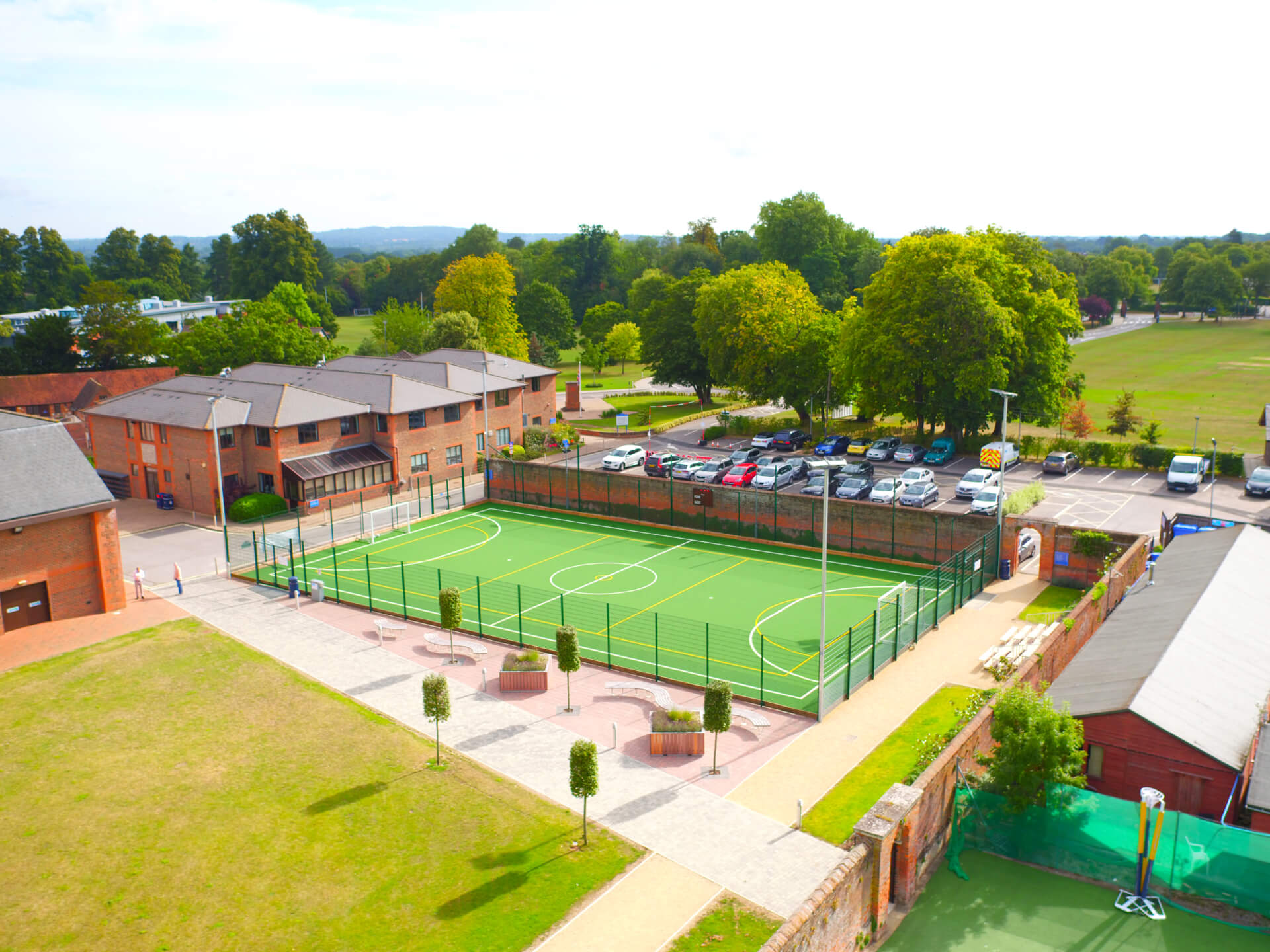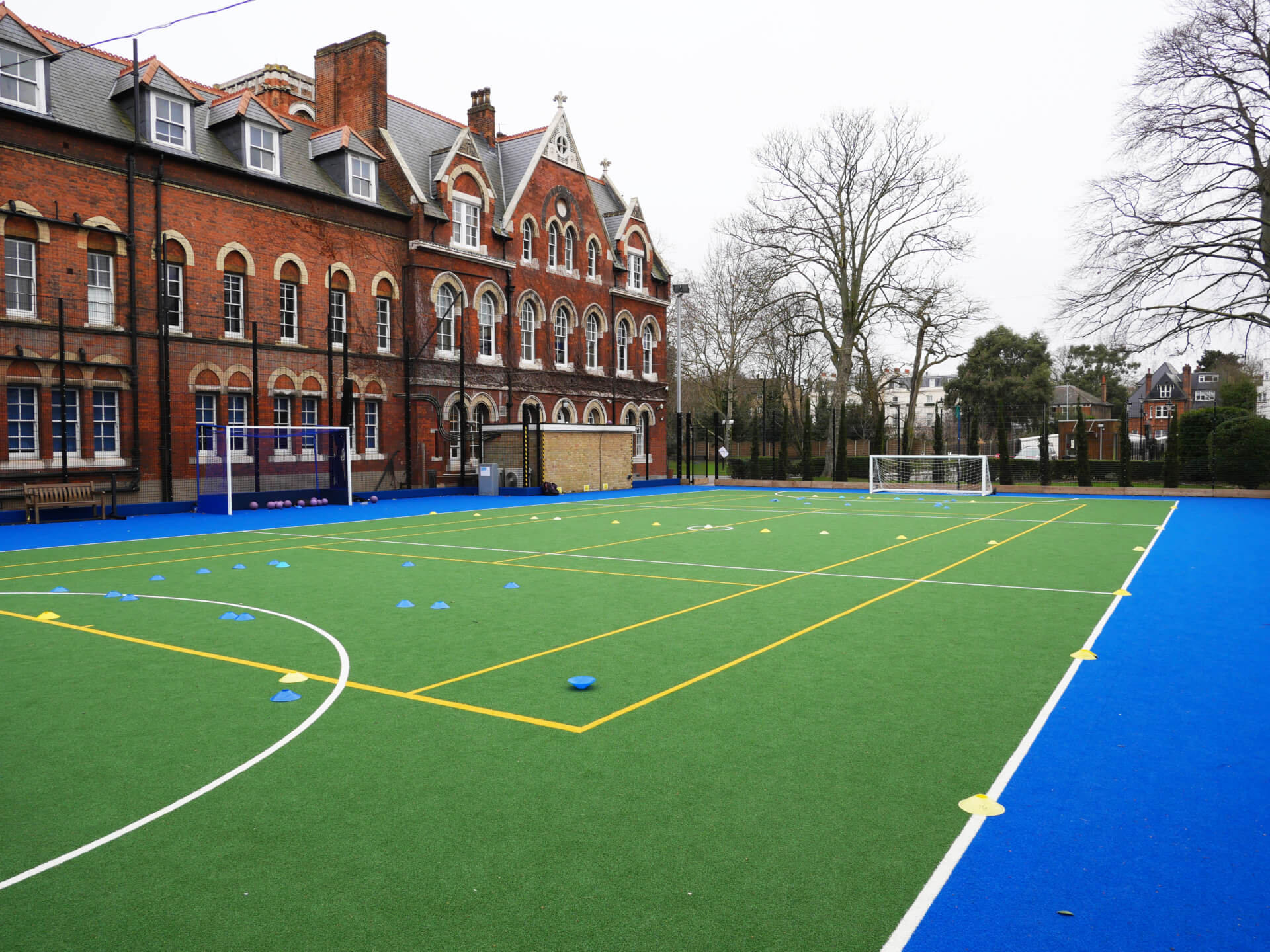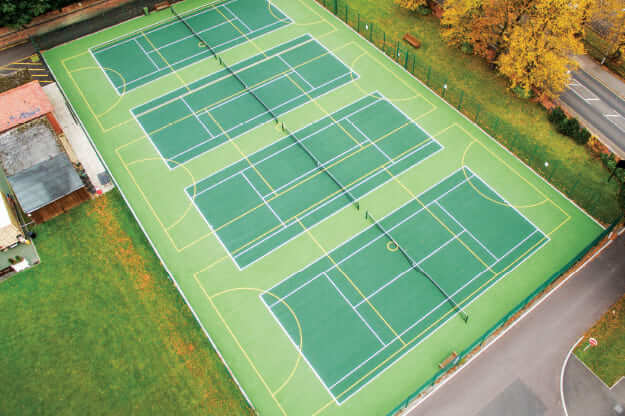FIH Certified Field Builders S&C Slatter are experts in the design, construction and maintenance of artificial sports pitches, including the latest, sustainable multi-sport surfaces known as Gen 2.
Read on to find out more or contact us to discuss your project requirements.
With 30 years’ experience in the construction of multi-use games areas and dedicated synthetic hockey pitches, we’ve worked with clients such as Eton College, Reading Hockey Club, and The University of Warwick.
We work in partnership with FieldTurf, who are FIH Preferred Suppliers.
If you’d like to discuss whether a Gen 2 surface may be suitable for your needs, please call or email for an informal chat about your new sports facility.

The construction of a Gen 2 pitch falls in line with the common stages of synthetic turf pitches:
1. Design and planning
Here, needs and sporting requirements will be identified and incorporated into the pitch design. Once planning permission is obtained, technical drawings and specifications will be produced ready for construction.
2. Environmental considerations
This involves mitigating the impact of the new facility and equipment such as floodlighting.
3. Health and safety
Ensuring that the construction site is safe and thoroughly planned in line with legislative requirements and best practice.
4. Earthworks
Preparing the ground and providing a level area to form the pitch base.
5. Drainage
Ensuring appropriate drainage systems are in place so that the pitch can’t become waterlogged.
6. Sub-base and base
This will typically comprise of a geotextile membrane, sub-base aggregate and asphalt layer. Materials are carefully chosen to support the Gen 2 system and free drainage of the pitch.
7. Shockpad
A shockpad will be laid over the base layer(s) and underneath the synthetic or textile surface.
8. Artificial surface
Gen 2 will surfaces will either be synthetic sand-dressed or textile.
9. Ancillary equipment
This is the equipment in support of the pitch function, including appropriate fencing, floodlighting and goalposts – as well as project specific requirements such as team shelters, pavilions and car parks.
More detailed information can be found on our Artificial Turf Pitches page.
Gen 2 pitches were developed when:
“Governing bodies from across the world of sport joined forces to create an innovative new playing surface that can be used for hockey, netball, tennis, small-sided football, futsal, lacrosse and more”
Gen 2 pitches are designed to provide sustainable facilities with a dynamic surface for “multiple sports, which reduces the amount of space required and utilises grounds to their full potential.”
There are two surfaces suitable for Gen 2 multi-sport surfaces:
These are short pile, dense artificial grass surfaces supported partially with sand infill, suitable particularly for hockey, netball and tennis.
Textile surfaces are manufactured using a needle-punch technique. This produces a thick, fleece-like surface which is again partially supported by sand infill. A relatively firm surface, this is particularly suited to tennis.
The correct combination of surface and shock pad will be defined during the design stage, based on your sporting requirements.
Gen 2 surfaces are particularly suited to schools and leisure centres rather than sports clubs, as the multi-sport element is best for a developmental level of play in any specific field of sport.
Call our experts for an informal chat to see if a Gen 2 pitch is suitable for your needs.


As versatile multi-sport surfaces, Gen 2 hockey pitches will vary in price depending on the overall surface and size.
The main factors that will impact the overall pitch cost are:
Additional work is also often required in the form of ancillary equipment (team shelters, pavilions, spectator areas) and civil engineering (access pathways, hard standings, roadways and car parks), so this may need to be factored into your costs.
Please get in touch if you’d like an example of a detailed breakdown of project costs, or a quote on the cost of building a hockey pitch based on your requirements.
Design and planning is usually the longest stage in any sports construction project.
After planning has been granted, a construction programme will be agreed.
The typical length of time on-site to construct a Gen 2 surface is likely to be between 2-6 weeks .
Gen 2 pitches as with other sports facilities are often funded through capital spend or private funding. However, there are a number of funding options available to schools and organisations who don’t have the option to use capital spend, or wish to protect their cashflow and spread costs over time.
If you’re looking to improve an area used by the local community, you may be eligible for Sport England funding, such as their community asset fund. You may also find that your local or regional council is able to offer grants to contribute towards the cost.
If you’re ineligible for grant funding, private funding options are available, such as operating leases and hire purchase agreements. You can find out more about finance options on our funding page.
A Gen 2 pitch is built with sustainability in mind, and will generally achieve a lifespan of 10 years. This will vary based on the quality of surface, pitch construction, pitch maintenance and the weekly hours of use.
As multi-sport pitches, Gen 2 pitches can achieve an FIH Multi-Sport performance level certification.
The cost of testing is usually between £2,000 – £3,000.
As with all synthetic surfaces for sport, regular maintenance is crucial for maximising the lifespan, performance and safety of a Gen 2 pitch.
Maintenance can include the removal of debris (such as moss, weeds and litter), drag brushing, managing infill levels and decompaction. Maintenance will ensure the safety of your pitch, preventing problems with drainage and grip, and is often required to fufill the terms of manufacturer warranties.
To find out more about maintaining Gen 2 and other artificial surfaces, head to our maintenance section or get in touch with our dedicated maintenance team to discuss your needs.
S&C Slatter contributed to the official Gen 2 Sports Pitch Design Guidance document, produced by the International Hockey Federation (FIH) in partnership with England Hockey, England Netball and the Lawn Tennis Association (LTA), which was also endorsed by Sport England, the European Hockey Federation and International Tennis Federation.
For more information call 01635 34521 or email enquiries@slattersportsconstruction.com